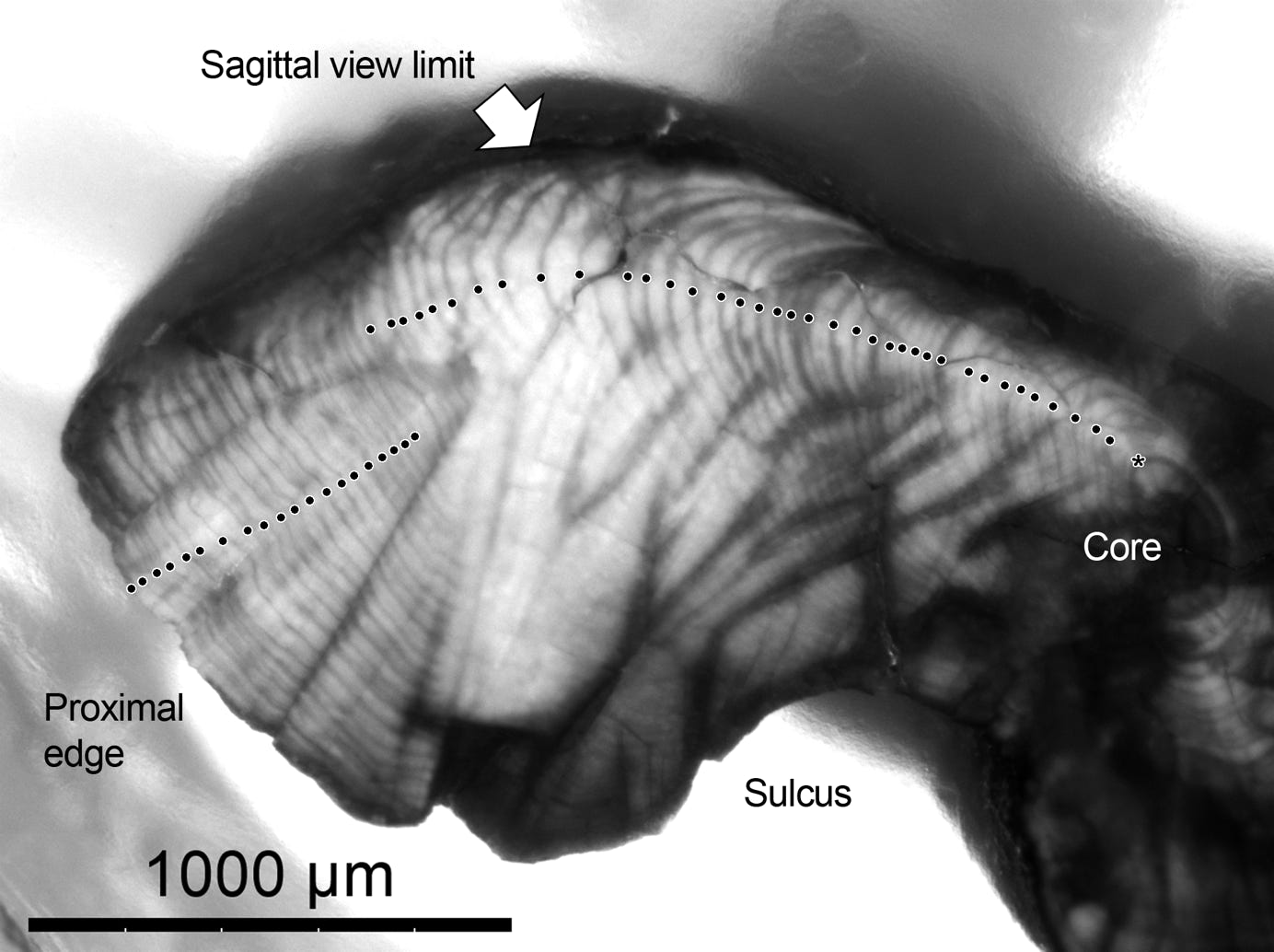
European Eel and Invalid Age Estimates

Bomb Radiocarbon - European Eel
Published 2025 - Radiocarbon journal
BOMB RADIOCARBON DATING AND AGE ESTIMATION OF EUROPEAN EEL (Anguilla anguilla) OF NORWAY
Age estimates from bomb 14C dating conflict with a well-recognized age reading protocol (grinding, polishing and staining in the sagittal plane) for otoliths of European eel (Anguilla anguilla). Proper alignment of calculated hatch years for 14C measurements taken from the earliest otolith growth — among the smallest otolith extractions to date for successful 14C analysis due to the advent of gas-AMS — was not achieved using age estimates from an accepted method. The realignment of otolith 14C values to a tropical bomb 14C reference chronology, which is most applicable to the Sargasso Sea as the natal origin of European eel, led to an increase of the original age estimates by 8 to 32 years. A maximum age of approximately 46 years was determined for the European eel specimen with the most massive otolith, of which mass is a reasonable proxy for age and was instrumental in identifying age estimate discrepancies. By extending the otolith mass-to-age relationships from this study to the most massive otoliths available from archived otoliths of Norway, an increase of up to several decades from the original otolith age estimates was discovered, leading to support for a potential lifespan of 70–100 years in the natural environment.

Figure 1. Map of North Atlantic with surface current patterns relative to the migration path of European eel, with collection locations in Norway (orange stars), and the selected bomb-produced 14C chronology locations from across the North Atlantic and North America (nuclear symbols; see Figure 2). Eggs hatch in the Sargasso Sea and leptocephalus migrate to inshore and continental habitats of northern Africa, throughout Europe, and north to Scandinavia (blue shaded edges). Radiating contours of 10-, 15-, 25-, and 45-mm TL are European eel length limits, within which nothing greater than that length exists in surface water collections and are indicative of the northeasterly migration pattern (Schmidt 1922). The most applicable bomb 14C reference records are from coral and otoliths in the western North Atlantic (Gulf of Mexico, Caribbean, Bermuda, Antilles) because they represent levels expected for the North Atlantic Gyre (Sargasso Sea) and waters advected as the migration path along the Gulf Stream to locations like Norway. A reliable clam shell record from the North Sea provides insight on 14C levels that are mixed with northern Europe runoff (waters that European eel would cross when migrating to Norway) and is intermediate to the timely 14C records of the Arctic and Laurentian lakes of North America (expected to be similar freshwater 14C records of Norway). Base map was rendered from a classic ocean circulation map produced by American Geographic Society (1943) that remains accurate for general flow patterns with indications of warm tropical (orange) and cooler marginal (green) currents (an otolith 14C record from cool waters of the Labrador Current off Canada provide an example of an attenuated bomb 14C signal for the Northwestern Atlantic; Figure 2).

Supplemental Figure 1. Section image is from a cracked and burnt otolith preparation (transverse plane) from a 77.4 cm TL European eel (silver stage) from Ireland (personal communication, Russell Poole, Marine Institute, Ireland). This view and counting of a well-defined transverse otolith section — aged to 57 years — exemplifies the potential differences from use of the sagittal plane for age estimation in European eel. Note the zero band is marked with an asterisk symbol (*).
Note that if this otolith were prepared to view and count in the sagittal plane, the growth shown to stack up on the proximal side of the otolith (along the sulcus) would be ground off and lost. This would equate to a loss of approximately half of the growth zone structure that is visible and quantified here as the latter 25–30 years of growth. Hence, the EIFAC advice to use burning/cracking for large and/or old specimens (Vøllestad et al. 1988).
This image was originally shared on the cover and page 44 of the otolith ageing manual from the ICES Workshop on Age Reading for European and American Eel (WKAREA) meeting held in Copenhagen in 2009 (ICES 2009a/b).